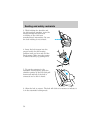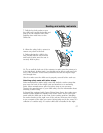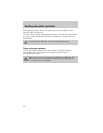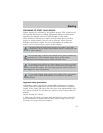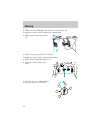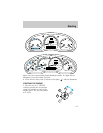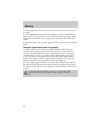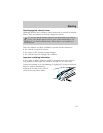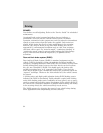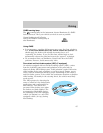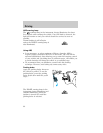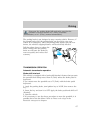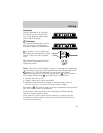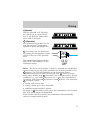
BRAKES
Your brakes are self-adjusting. Refer to the “Service Guide” for scheduled
maintenance.
Occasional brake noise is normal and often does not indicate a
performance concern with the vehicle’s brake system. In normal
operation, automotive brake systems may emit occasional or intermittent
squeal or groan noises when the brakes are applied. Such noises are
usually heard during the first few brake applications in the morning;
however, they may be heard at any time while braking and can be
aggravated by environmental conditions such as cold, heat, moisture,
road dust, salt or mud. If a “metal-to-metal,” “continuous grinding” or
“continuous squeal” sound is present while braking, the brake linings
may be worn-out and should be inspected by a qualified service
technician.
Rear anti-lock brake system (RABS)
Rear Anti-lock Brake System (RABS) is standard equipment on this
vehicle. RABS is designed to help you maintain directional stability in
emergency stopping situations. With RABS, the rear brakes are kept from
locking during panic stops; however, the front wheels can lock because
they are not controlled by RABS. You should apply the brakes with
steadily increasing force, as if “squeezing” the brakes. If you feel the
front wheels begin to lock, momentarily release the pedal and repeat the
“squeeze” technique. Whenever the front wheels lock, the vehicle cannot
be steered.
A clicking noise and slight pedal pulsation during RABS braking events
indicates the RABS is functioning. Pedal pulsation coupled with clicking
noise while braking under panic conditions on loose gravel, wet or snowy
roads is normal and indicates proper functioning of the vehicle’s RABS. If
the vehicle has continuous vibration or shudder while braking, felt mainly
in the steering wheel, the vehicle most likely needs service.
The RABS operates by detecting the onset of rear wheel lockup during
brake applications and compensating for this tendency.
Driving
64



